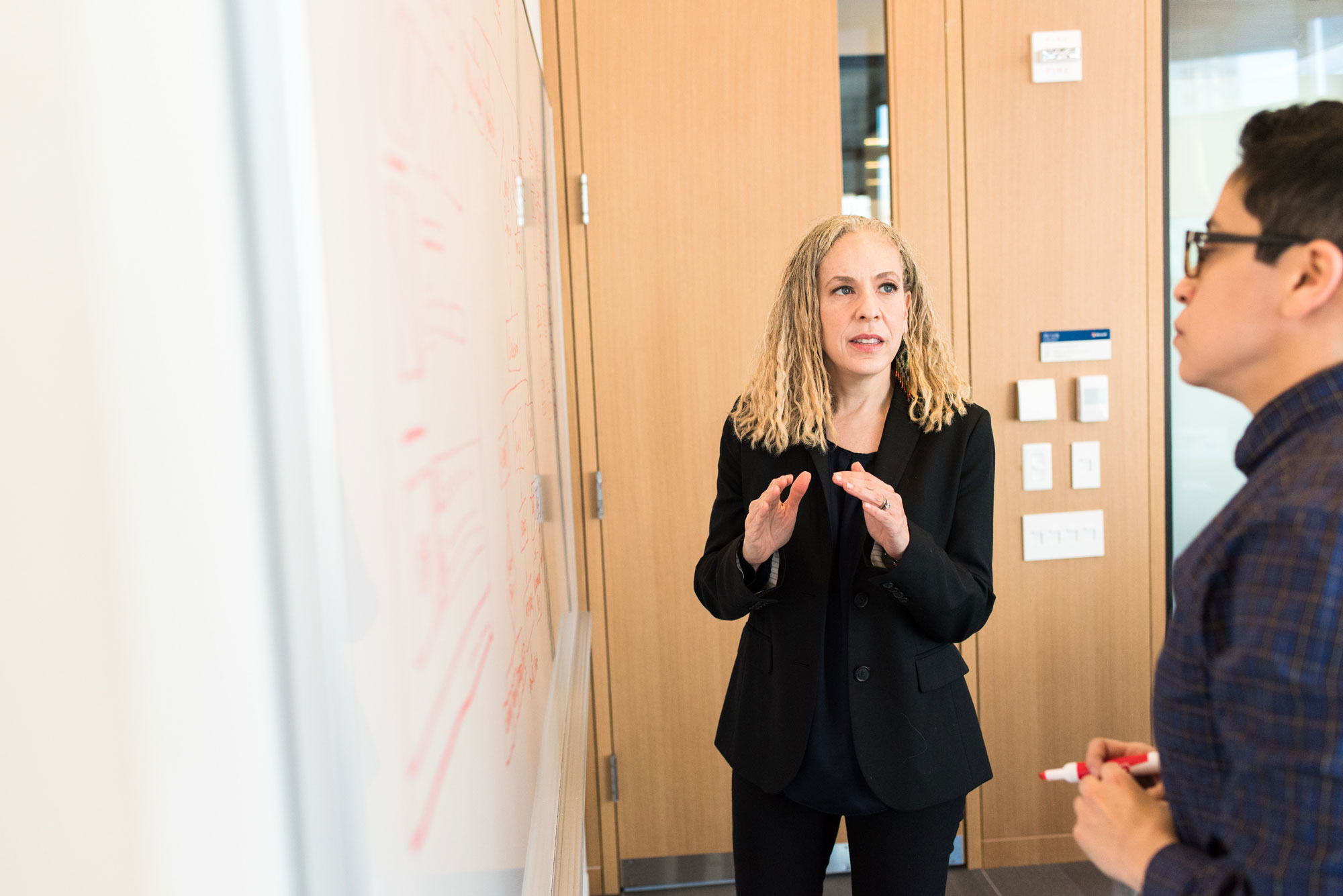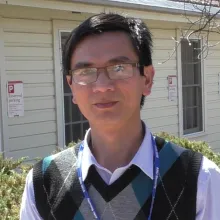Working Well, Working Wisely
We address five key research questions, joining multiple lines of evidence to reveal the diversity of older workers’ work-health dilemmas and effective ways for national policies to solve them.
Groups
Project status
Content navigation
About

By 2060, nearly one-half of Australians aged 64 or older will be employed. This increase in the number of older workers means that jobs, services, and employment policies will have to be redesigned to accommodate an ageing workforce. The key dilemma for older workers (and for workplaces) is their health. If older workers’ health problems are not addressed, their health may undermine their participation and productivity, in turn affecting the sustainability of the nation’s economy, tax base, and the provision of health care services.
The project “Working Well, Working Wisely” represents a major collaboration between national policy portfolios (employment, social services, workplace health and social equity) and expert scientists in work, health, social equality and policy process. The goal is to develop interventions that can capitalise on older Australians’ skills and expertise, boost their economic participation, while minimising later health and aged-care costs. The project addresses five key research questions, encapsulated in five studies, which join multiple lines of evidence to reveal the diversity of older workers’ work-health dilemmas and effective ways for national policies to solve them.
Components to the study
Study 1, Jobs: Which jobs and conditions pose particular hazards for the current and future wellbeing of older workers, and for their workforce participation?
This study addresses the policy challenge that not all jobs will be equal in terms of health, and considers how this job-health interplay may be amplified in an older workforce. Our research shows that employment does not necessarily deliver health benefits to employees, in fact, poor quality jobs (that are insecure, offer workers little autonomy or opportunity, or involve heavy workloads) are as detrimental to health as unemployment. This means that workplace policies and job design are important entry points for intervention. But in contrast to the ‘healthy workers’ usually studied, and for which most policies are designed, much larger proportions of older workers experience health risks (e.g., hypertension, high cholesterol, physical inactivity, obesity/overweight), have arthritis, osteoporosis, or cardiovascular disease, and have greater need for recovery. Older workers also have a 5-10% greater risk (relative to younger counterparts) of mental illness, musculoskeletal injuries and fatigue. The combination of increased health risks and existing conditions constitute a major work-health safety challenge.
Study 1 consists of a series of longitudinal analyses of Australians aged 50-70 years, using longitudinal data on a nationally representative sample of Australian households. Fifteen annual waves of data will become available during the early stages of this study. Our pilot analyses of waves 2-12 reveal a sample of 7679 people aged 50-70 years old. For Study 1, we are using statistical methods to assess how job characteristics precede or coincide with changes in health and health behaviours. Our aim is to establish the temporal ordering and relative contribution of multiple factors, as well as consider potential reverse causality, with older workers’ wellbeing, illness and disability, influencing subsequent employment and jobs. Our analysis includes the evaluation of potentially distinct patterns of employment and/or workforce exit amongst respondents with different chronic health conditions. Given the likely gendered nature of employment within these cohorts, our analyses are also stratified by gender.
Study 2, Workers: How are these work, health and participation risks generated among older workers? Who is most vulnerable and why?
The relationships between jobs and health are also likely to be socially patterned. However, what is not known is which older workers could be most vulnerable and why. Because industry settings shape workers’ experiences, we are focusing on three major industry categories (pink collar, blue collar, white collar) to examine the relationship between individual workers’ experience and workplace context. We are conducting interviews with about 70 employed older workers, purposively sampled to represent different socio-demographic characteristics, work commitments, care circumstances, service and health care needs. Women and men aged 50 to 70 years are being interviewed face to face, and by telephone, to explore this diversity of characteristics, and how they may generate or intersect with health, social vulnerability, and service needs among older workers.
Study 3, Workplaces: What is the readiness and capacity of Australian workplaces to adapt policies and procedures to meet the health-related needs of older workers?
The health limitations experienced by older workers, including for health care, is one of the reasons they encounter discrimination in the workplace. In order to design effective educational, support and regulatory strategies, it is necessary to know which workplaces may be least prepared and why, what problems are anticipated, and what supports workplaces need, including service supports for workers.
Study 3 consists of a major workplace survey (of large, medium, and small businesses) that assesses key aspects of work design known to be important for protecting older workers from injury and promoting their health in the workplace. We are asking senior human resources and occupational health and safety personnel (n = 2,000) for their views about, and current policies to support, older workers, and the capacity and willingness of their organisation to adapt jobs to fit health and health care needs. The survey is being conducted in partnership with Workplace Health and Safety Queensland (WHSQ).
The survey is now closed.
More information about the Workplace Survey
Study 4, Precedents: What successful interventions and policies have been used in Australia and elsewhere to build older workers’ participation by addressing health or social vulnerability?
Study 4 identifies the policy, service and intervention precedents in Australia and internationally that can be used to guide new policy design and roll out. Our precedent scoping involves a critical analysis of health and equity achievements, along with workforce participation. We are also critically assessing initiatives and gaps in existing policy frameworks, while considering and comparing policy actors (workplace health, social services, employment), goals (health, equity, productivity) and targets (workplaces, individuals, services).
Study 4 undertakes a comprehensive review of domestic and international policy approaches, legislation, regulation, services, interventions and solutions to work-health dilemmas and needs for older workers. The review considers levels of intervention, including, where available, industry-specific initiatives. We are also examining peer-reviewed and relevant grey literature to identify publicly available evidence and reports (including publications describing the outcomes of interventions, policy or programs). Our analysis considers international, national, and state programs, and will attempts to identify components relevant to the Australian context and existing national policies. The ways in which potential benefits and costs of older worker employment are represented and addressed in existing policies is also being analysed and considered alongside the findings of Studies 1, 2, and 3 to identify alignment, points of disjuncture, and gaps.
Study 5, Solutions: How do key stakeholders see the problems and the solutions? What interventions would be both feasible and fair?
Study 5 addresses how to create change in policy design, and in turn, lead to desirable policy outcomes. Our project acknowledges that policy actors and key stakeholders need to be included and actively engaged in the process in order to achieve these goals. As such, Study 5 seeks direct input from stakeholders, drawing on their own views and expertise. Specifically, this component of the study will use the interactive Delphi method. Over two rounds of interviews with key stakeholders, the findings from the four previous studies will be used as a basis for discussion, and participants will be asked for their views on what would work, and why. This information will be synthesised and shared with other stakeholders, to provoke further insights and solutions. This will create the opportunity for policy makers to hear the views and ideas of others from different sectors and settings, and generate opportunities for new ideas and understanding, as well moving towards a consensus.
The stakeholders will include policy makers from relevant portfolios (employment, aging and health); managers from small and large business; industry and business peak bodies; union representatives; service delivery and providers (rehabilitation, primary health care, aged and other care services); and experts in health promotion, workplace health and safety, health protection, and lifestyle intervention designers.
The project’s ability to deliver the evidence that our partners need is enabled by the bricolage design. Unlike designs based on a single source of data, the bricolage builds evidence through interlocking perspectives requiring multiple types and domains of information. The scope and content of the proposed bricolage study set was developed in collaboration and consultation with our partners to deliver a cross-portfolio analysis. The final Delphi study on solutions unites the four pieces of evidence, using this evidence to engage with, inform, and investigate the solutions stakeholders consider to be effective and fair.

National benefit
This project addresses a major social and economic challenge for Australia – how to respond to population aging. It investigates multiple aspects of older workers’ health needs and vulnerabilities (a science and research priority) within a major cross-portfolio. The answers we aim to provide are likely to deliver major financial and social benefits to workplaces, older Australians and Government. Measures that enable older adults to keep working and stay healthy not only support immediate economic and social goals, they will reduce later rates of chronic illness, and over the longer term reduce costs and improve quality of life among a large and growing proportion of the population.
Significance and outcomes
Our outcomes (evidence reports, peer reviewed publications, policy briefs) will enable us to address:
- A potential reason for future policy failure. Poor health is one of the most influential barriers to people participating in the workforce as they age, a problem for which more workplaces are not prepared. If interventions to encourage and achieve greater workforce participation are to succeed, they must target who is at risk, identify what would help, and design acceptable and feasible workplace and service supports.
- The potential for inadvertently widening social inequity. If health needs and supports for older workers are not addressed, there is a risk (revealed by our preliminary analyses) that those with the greatest health and retirement income needs will be further excluded and disadvantaged.
- An urgent need for cross-portfolio policy reform. Our research-policy collaboration considers a fundamental (and so far neglected) element – the interplay between older workers’ health and employment itself, such as the ways jobs are designed, what services are needed, and how to improve their integration.
Innovation
This project has the following four major innovations, with immediate practical outcomes. These are:
- Identifying practical strategies for workplaces and services to adapt to an older workforce.
- Building a unique and potentially long-term research-policy partnership.
- Developing a new methodological approach based on a bricolage design.
- Delivering new theory and research evidence on how labour markets, jobs, and services may combine to drive population health, participation and social equity, especially through time, income and space.
Related articles
Members
Principal investigator
Researcher
Other members
- Dr Dina Bowman (Brotherhood of Saint Laurence)
- Professor Peter Butterworth (University of Melbourne)
- Associate Professor Gemma Carey (UNSW)
- Professor Shelley Mallet (University of Melbourne)
- Mr Peter Thorning (Office of Industrial Relations, Queensland Government)
- Dr Perri Timmins (Safe Work Australia, ANU Visiting Fellow)
- Dr Peng Yu (Department of Social Services, ANU Visiting Fellow)
- Dr Aaron Hart (University of Melbourne)
More information




